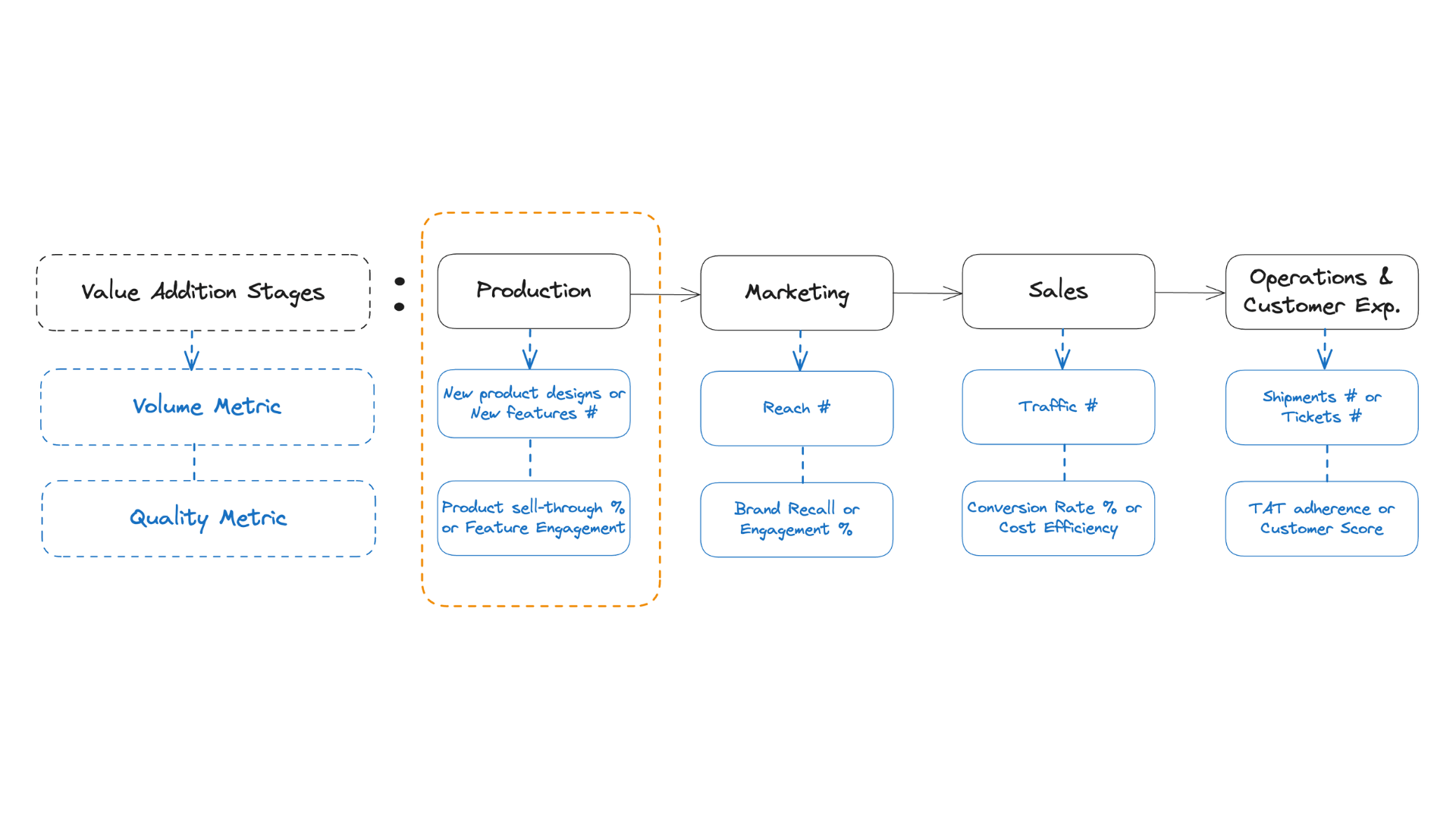What is the Metric Hierarchy for Production stage?
Let us now apply the concepts of Metric Hierarchy and Paired Metrics to the first stage of an internet business: Value Production.
Different businesses have unique value production stages dictating their key metrics and metric hierarchies. Let's look at examples from SaaS companies, marketplaces, and Direct-to-Consumer (D2C) brands.

SaaS - Design & Digital Product Development:
In SaaS companies, value production is often achieved by building features that solve customers' problems. The top of the metric hierarchy typically focuses on 'Feature Adoption Rate' paired with 'Development Velocity'.
Feature Adoption Rate indicates how quickly and widely new features are used by customers, a direct measure of product value. Development Velocity measures the speed of new developments, ensuring that the product evolves quickly to meet market demands.
The hierarchy might then break down into more specific metrics like code deployment frequency, bug resolution time, and user feedback scores.
Marketplace - Category & Business Development:
In marketplaces, value production is often accomplished by adding new categories or products for the customer. Marketplaces might focus on 'Seller Acquisition Rate' paired with 'Buyer Satisfaction Score'.
Seller Acquisition Rate reflects the platform's growth in terms of new sellers, vital for expanding offerings. Buyer Satisfaction Score balances this by ensuring that the increase in sellers doesn't compromise quality. Subsequent metrics might include average transaction value, seller churn rate, and buyer repeat purchase rate.
D2C Brands - Physical Product Design and Production:
For a D2C brand, 'Number of New Products' might be paired with 'Production Cost Efficiency'.
The 'Number of New Products' serves as the volume measure, while 'Production Cost Efficiency' complements it as the quality/efficiency measure. Further down the hierarchy, metrics might include time-to-market, product defect rate, and customer review scores.
Common Theme:
In each case, the top metric pair reflects the balance between what the business seeks to achieve and how it manages the underlying operations.
The subsequent hierarchy is then built to provide deeper insights into each area, ensuring that both broad objectives and detailed operational performance are captured and aligned.
Takeaway:
Understanding the different functions and stages of value production across various industries helps businesses tailor their metric hierarchies to their specific operational context.
By starting with a balanced top metric pair and expanding into a detailed hierarchy, businesses in any sector can effectively measure, manage, and enhance their value production processes.